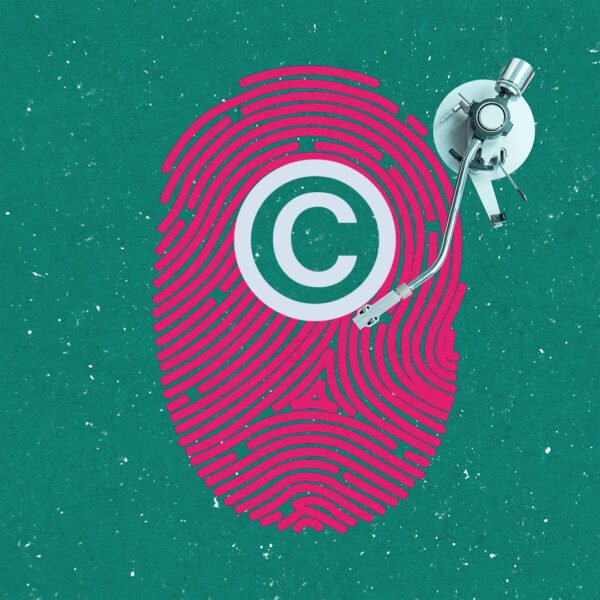Self-publishing a horror story in 2024 can feel like standing in the dark corner of a haunted house with nothing but your wits and a flashlight—exciting, a bit terrifying, but ultimately empowering. Whether you’ve just finished writing your chilling tale about vengeful spirits or an apocalyptic world overrun by zombies, you probably find yourself staring at the daunting question: “What now?”
In this article, we’ll walk you through everything you need to know about self-publishing your horror story and why, in 2024, platforms like Spines make it easier (and spookier) than ever to bring your terrifying creations to the world. Setting a specific publication date is crucial as it helps you adhere to a schedule and manage your relationship with any involved parties.
Your Publishing Journey Awaits – Start NowWhy Horror Authors Should Consider Self-Publishing
In today’s fast-paced literary landscape, self-publishing offers indie horror writers the ultimate control over their work—think of it as being your own mad scientist but without creepy lab assistants and questionable experiments. The power to shape your book’s fate is in your hands, from deciding on the plot twists to selecting the perfect cover art. And the best part? No gatekeepers.
Self-publishing is booming, and horror, in particular, has found a perfect home in the world of indie authorship. The genre’s wide appeal—from slow-burn psychological thrillers to visceral zombie fiction—means readers are eager for fresh stories, new voices, and innovative twists. So, instead of waiting months or even years to hear back from a literary agent, why not seize control and self-publish? In fact, platforms like Spines are tailored to help horror authors succeed, making the whole process smoother than a freshly polished knife blade in a slasher film.
The Power of the Horror Genre in 2024
Horror is one of the most dynamic genres in publishing today. With the success of popular franchises like Stranger Things and the continuing rise of psychological horror and dystopian thrillers, it’s no surprise that horror stories are drawing more and more readers in 2024. The genre’s appeal lies in its versatility—whether you’re writing about a haunted house, a serial killer on the loose, or a post-apocalyptic world filled with terrifying creatures, the possibilities are endless.
In fact, horror fans are a devoted lot. From psychological horror to zombie fiction, from short stories to full-length novels, there’s a subgenre for every reader. And the best part? There’s always room for something new. Self-publishing allows you to explore niche subgenres like dark fantasy, folk horror, and even horror science fiction without the constraints of traditional publishing.
If you’ve got a fresh take on the genre, chances are, there’s an eager audience waiting for you to unleash your madness upon them. With platforms like Spines, you can directly connect with readers who are hungry for your next terrifying tale.
Understanding the Horror Genre
The horror genre is a vast and varied landscape, teeming with subgenres that cater to every kind of fear. From the creeping dread of psychological horror to the visceral thrills of zombie fiction, horror offers something for everyone. The genre’s power lies in its ability to tap into our deepest fears and anxieties, making it a favorite among readers looking for an adrenaline rush.
In 2024, horror continues to evolve, with new voices and fresh takes on classic themes. Whether you’re writing a short story about a haunted house or a full-length novel set in a dystopian future, the horror genre’s flexibility allows you to explore a wide range of terrifying scenarios. And with the rise of self-publishing, there’s never been a better time to unleash your dark fantasies on the world.
Your Publishing Journey Awaits – Start NowUnderstanding the Self-Publishing Landscape
Self-publishing in 2024 is not what it was a decade ago. The days of having to print hundreds of copies and hawk them in the back of a used bookstore are long gone. Now, you can publish your book globally with the click of a button, and if you know where to look, the tools are readily available to help you create a professional product.
Setting a specific publication date is crucial in the self-publishing process. It helps in planning and scheduling, ensuring that all aspects of the book’s release are coordinated effectively.
At the forefront of this self-publishing revolution are platforms like Amazon Kindle Direct Publishing (KDP) and Apple Books. But here’s the thing: while these platforms are big names in the industry, they often don’t offer the specialized services you’ll need as a horror writer. Enter Spines—an indie-friendly platform that’s tailored to the unique needs of horror writers. From expert cover designers to marketing tools specifically crafted for horror books, Spines offers an all-in-one solution that allows you to focus on what you do best: scaring the pants off your readers.
Key Steps to Self-Publishing Your Horror Story
So, you’ve got your horror story written, your nightmares documented, and your characters ready to haunt the world. Now, what’s next? Here’s your guide to the most important steps in self-publishing your horror masterpiece. Setting a specific publication date is crucial as it helps you adhere to a schedule and manage the entire publishing process effectively.
1. Writing the Perfect Horror Story
First things first: your story has to stand out. In a genre as beloved as horror, you’ve got to create a tale that’ll keep readers awake at night. Whether you’re penning a psychological thriller, zombie fiction, or a supernatural horror piece, your story needs a strong premise and well-developed characters.
Use descriptive language to build atmosphere and suspense. The horror genre thrives on tension, so take your time to craft a slow burn if you’re aiming for a mind-bending psychological thriller. Alternatively, if you’re leaning into the gore and action, make sure the stakes are high and the scares are gruesome.
Remember, your readers are looking for an escape from the mundane. Give them something they won’t forget—whether that’s a twist ending, an unforgettable villain, or a narrative that keeps them questioning reality.
2. Self-Editing Techniques
Self-editing is where your horror story begins to take its final, polished form. Think of it as the process of sharpening your knife before the big scare. Here are some essential self-editing techniques to help you refine your work:
- Revise for clarity: Ensure your writing is clear and concise. Each sentence should serve a purpose, and your narrative should flow smoothly. Avoid unnecessary jargon and keep your descriptions vivid but to the point.
- Revise for pacing: Horror thrives on tension and suspense. Balance your pacing to keep readers on the edge of their seats. Slow down to build atmosphere, then hit them with a sudden jolt of terror.
- Revise for consistency: Check for consistency in your characters, plot, and setting. Make sure your protagonist’s actions align with their established traits, and your plot doesn’t have any glaring holes.
- Use grammar and spell checkers: Tools like Grammarly or ProWritingAid can catch errors you might miss. They’re your safety net, ensuring your manuscript is as polished as possible.
- Get feedback from beta readers: Beta readers can provide invaluable insights. They can point out plot holes, pacing issues, and character inconsistencies. Choose readers who are familiar with the horror genre to get the most relevant feedback.
3. Working with Beta Readers and Professional Editors
Collaborating with beta readers and professional editors can elevate your horror story from good to spine-chillingly great. Here’s how to make the most of these partnerships:
- Choose beta readers who are familiar with the horror genre: They’ll understand the genre’s conventions and can provide feedback that aligns with your story’s needs. Their insights can help you fine-tune your scares and ensure your plot twists hit the mark.
- Provide clear guidelines for beta readers: Let them know what kind of feedback you’re looking for. Are you concerned about pacing? Character development? Specific scenes? Clear guidelines will help them focus their critiques.
- Consider hiring a professional editor: A professional editor can offer a detailed and objective critique. They’ll help you polish your manuscript, ensuring it’s ready for publication.
- Research the editor’s credentials: Make sure they have experience working with horror writers and a solid understanding of the genre. A good editor will know how to enhance your story’s strengths and address its weaknesses.
4. Editing: Making Your Story Shine
The editing process is where the magic happens—or in some cases, where the nightmares are purged. Editing is a crucial step in ensuring your horror story feels tight, polished, and professional. Whether you’re using beta readers, a professional editor, or both, don’t skimp on this part of the process.
Beta readers (or “test subjects” as we like to call them) can help you spot plot holes and pacing issues, and maybe even reveal that your werewolf sounds more like a confused housecat. Once you’ve incorporated feedback, use editing tools to catch grammar and spelling errors. Tools like Grammarly or ProWritingAid are your friends—especially when your sleep-deprived mind has missed that one rogue apostrophe.
5. Creating a Professional Book Cover
In horror, the cover is your first chance to make a lasting impression. The right cover can grab the attention of a sea of other books. A great cover doesn’t just look good—it sets the tone for the book inside. Whether it’s a haunting image or a minimalist design, your cover should scream (or whisper, depending on your style) “read me” to potential buyers.
This is where Spines really shines. Through its partnerships with talented cover designers, Spines helps you create a cover that complements your story perfectly, whether it’s a bone-chilling thriller or a cosmic horror masterpiece.
6. Formatting Your Manuscript for Self-Publishing
Formatting your manuscript correctly ensures your book looks professional on all platforms. The good news is that tools like Scrivener or Vellum can help you format your story for Kindle, Apple Books, and even Spines with minimal effort. And if you choose Spines, they offer a straightforward formatting guide to ensure your horror story looks its best.
Your Publishing Journey Awaits – Start NowBuilding Buzz for Your Horror Book
Once your book is live, it’s time to generate some buzz. Sure, writing horror can be a bit like creating your own personal hell, but marketing? That’s your opportunity to make the most noise without waking the dead.
Leverage social media to share teasers, snippets, and behind-the-scenes glimpses of your writing process. Horror fans love to connect with authors—they enjoy chatting about the darkest, creepiest tales and discussing their theories. Consider hosting virtual book signings, engaging with horror communities, and even doing podcast or radio interviews to talk about your book.
And let’s not forget the power of paid advertising. Platforms like Amazon and Facebook allow you to run targeted ads that put your book in front of the eyes of potential readers who are likely to enjoy your genre.
Building an Author Platform
In the digital age, building an author platform is crucial, especially for horror writers looking to connect with their audience. Here are some tips to help you establish a strong online presence:
- Create a website or blog: Your website is your online home. Use it to showcase your work, share updates, and connect with readers. A blog can also help you engage with your audience by sharing insights into your writing process or discussing horror trends.
- Use social media: Platforms like Twitter, Instagram, and Facebook are great for promoting your work and interacting with fans. Share teasers and behind-the-scenes content so that you can engage with the horror community.
- Join online communities: The Horror Writers Association and other online groups can provide support, networking opportunities, and industry insights. Being part of these communities can help you stay connected and informed.
- Attend writing conferences and events: These events are excellent for networking with other writers and industry professionals. They can also provide valuable learning opportunities through workshops and panels.
Navigating Multiple Submission Options: Why Spines Is the Best for Horror Writers
Sure, there are a number of self-publishing options out there, from the giant Amazon KDP to smaller platforms like Smashwords. However, none of them offer the tailored support and tools that Spines does for horror writers.
Spines provides horror authors with features like custom marketing tools, professional cover design options, and access to a supportive horror community. Whether you’re writing your first short story or your next horror series, Spines makes it easy to get your book in front of the right readers. And let’s be honest—if you’re writing something terrifying, you want a platform that knows how to handle nightmares.
Pros and Cons of Self-Publishing in the Horror Genre
Self-publishing offers horror writers a unique set of advantages and challenges. Here’s a balanced look at the pros and cons:
Pros:
- Creative control: Self-publishing allows you to maintain complete control over your work. From the plot to the cover design, every decision is yours.
- Faster time-to-market: Traditional publishing can be a lengthy process. Self-publishing lets you get your book to readers quickly, often within months of finishing your manuscript.
- Higher royalties: Self-publishing platforms typically offer higher royalty rates than traditional publishers, allowing you to earn more from each sale.
- Flexibility: You can make changes to your work at any time, whether it’s updating the cover, revising the content, or adjusting the price.
Cons:
- Quality control: You’re responsible for every aspect of the publishing process, including editing, formatting, and cover design. Ensuring a professional-quality product can be challenging.
- Marketing and promotion: Self-publishing means you’re also your own marketing team. Promoting your book and reaching your audience requires time, effort, and sometimes financial investment.
- Limited distribution: While self-publishing platforms offer wide distribution, they may not have the same reach as traditional publishers, especially in physical bookstores.
- Stigma: Despite its growing acceptance, some readers and industry professionals still view self-publishing as inferior to traditional publishing.
By weighing these pros and cons, you can make an informed decision about whether self-publishing is the right path for your horror story.
Additional Publishing Options: Is Traditional Publishing Right for You?
While self-publishing has its perks, you might still be wondering whether traditional publishing is the right route. After all, the idea of having a literary agent and a big publishing house behind your book can seem appealing. However, traditional publishing can be a slow and frustrating process, especially for horror writers. With most agents focused on mainstream genres, getting your horror novel noticed can be a challenge.
If you’re willing to play the waiting game, traditional publishing could be an option—but self-publishing allows you to bypass the long queues and submit directly to your readers. Plus, with Spines, you get the same professional support you’d expect from a publisher, without all the red tape.
Final Thoughts: Why Self-Publishing is the Future of Horror Fiction
Self-publishing your horror story in 2024 is not just about avoiding the horrors of traditional publishing; it’s about embracing your power as an author. With platforms like Spines, you gain complete control over every aspect of your book, from writing to marketing to creating a killer cover. The horror genre is thriving, and indie authors are leading the charge. So, what are you waiting for? Grab your pen (or keyboard) and get ready to send shivers down the spines of your readers. The world is waiting for your nightmare.
Your Publishing Journey Awaits – Start Now






